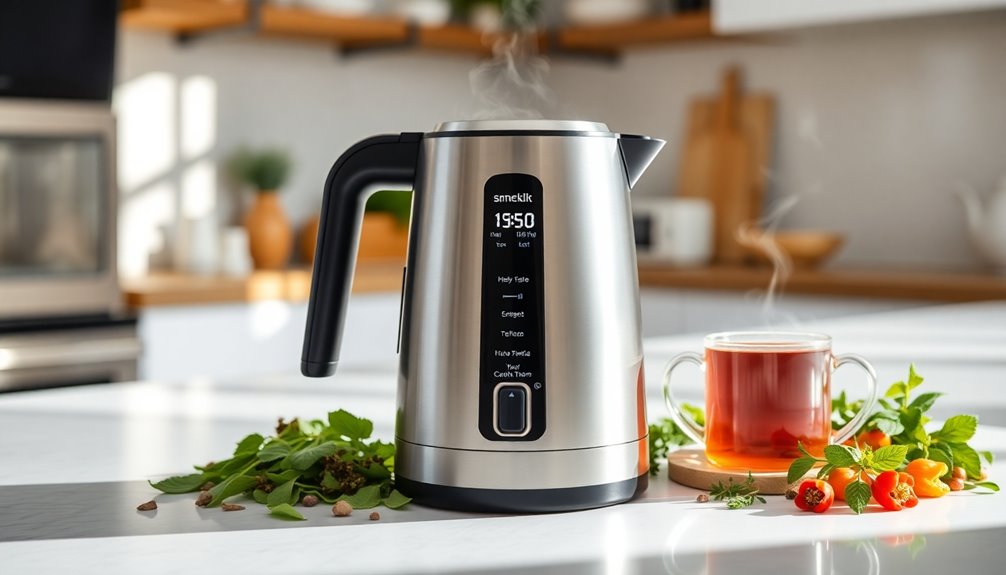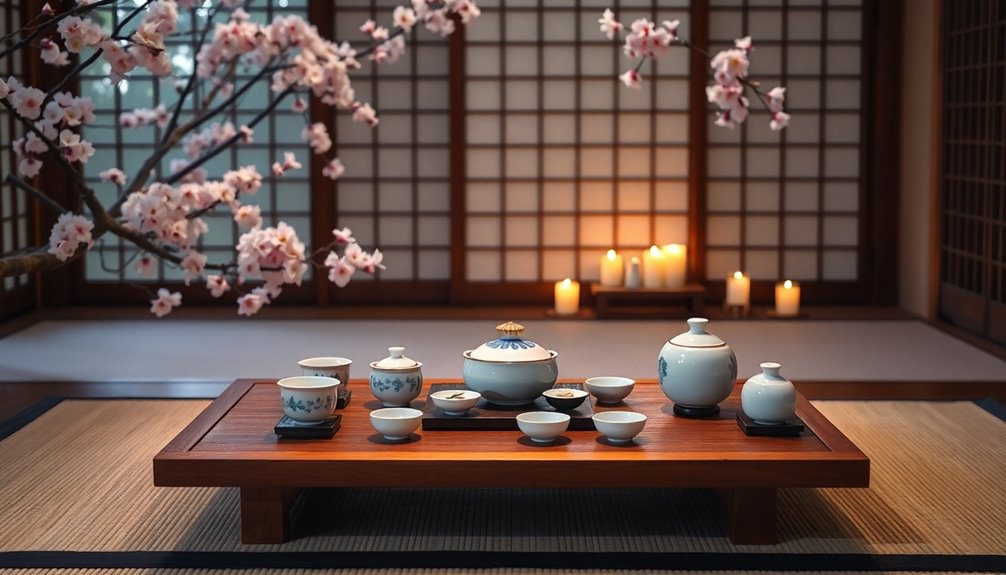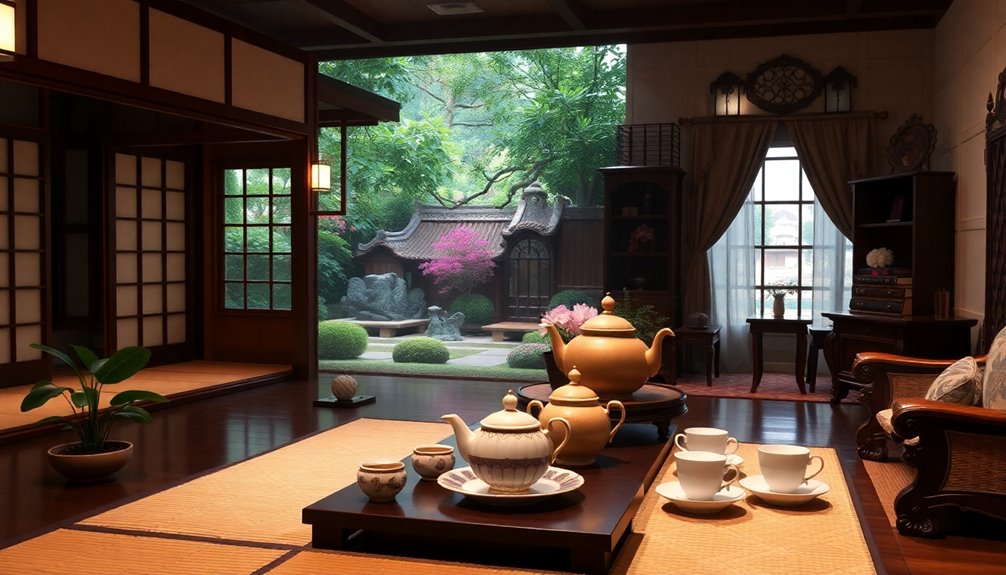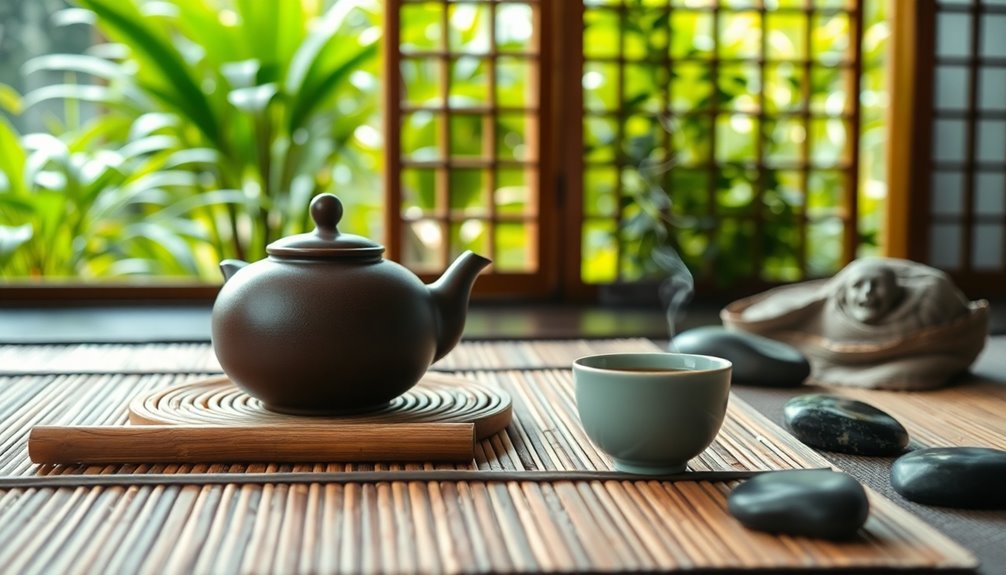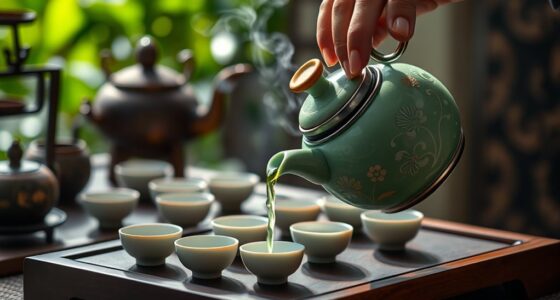Tea ceremonies in Asia hold deep cultural importance, reflecting community, respect, and mindfulness. Each tradition, like Japan's chanoyu and Korea's Darye, emphasizes connection and care, showcasing the beauty of being present. These rituals aren't just about brewing tea; they're festive celebrations that strengthen bonds and create warmth. From Chinese gatherings to Vietnamese ceremonies, every practice highlights hospitality and shared experiences. The preparation and enjoyment of tea foster a sense of belonging, making each sip meaningful. Join us as we explore the fascinating details and stories that make tea ceremonies so special across Asia!
Key Takeaways
- Tea ceremonies in Asia symbolize hospitality, respect, and community, fostering social bonds during gatherings and life events.
- Japanese chanoyu and Korean Darye emphasize mindfulness, encouraging presence and appreciation through ritualistic tea preparation.
- Regional variations highlight unique cultural practices, with each ceremony promoting social interaction and strengthening communal ties.
- Tea rituals reflect rich historical traditions, preserving cultural heritage and shared experiences across generations.
- Ethical engagement in tea practices fosters cultural education and awareness, enhancing the appreciation of diverse tea rituals.
Introduction
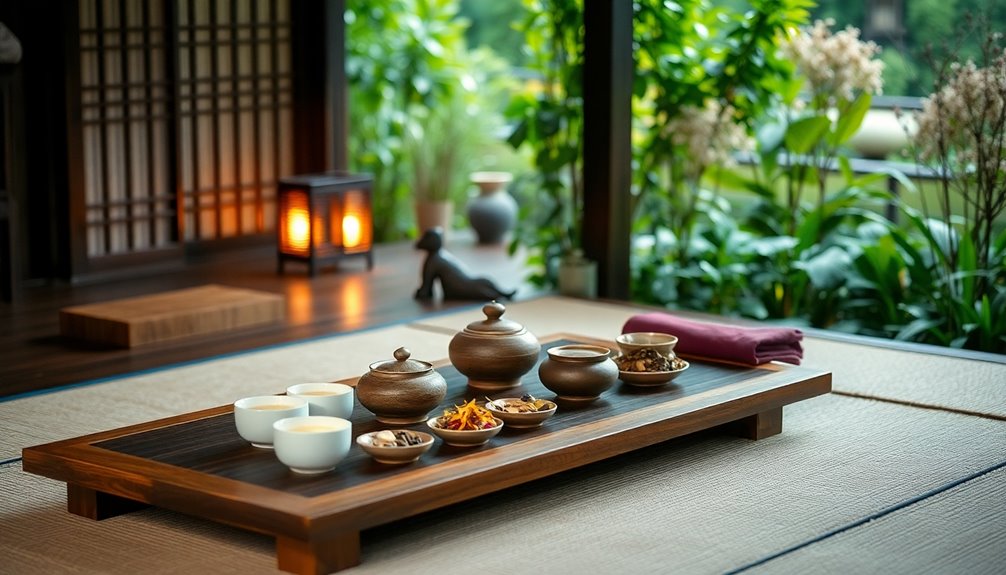
Tea's cultural significance in Asia is profound, weaving together traditions that highlight community, respect, and mindfulness. When you think about a traditional tea ceremony, you're stepping into a beautiful cultural activity involving the careful preparation and enjoyment of tea.
In Japan, the chanoyu emphasizes Zen Buddhist principles, showcasing simplicity and the beauty of imperfection. This ceremony isn't just about tea; it's a moment for mindfulness and reflection.
In China, tea ceremonies symbolize deep respect and tradition, often acting as a bridge during important family gatherings. Here, tea isn't just a drink; it's a way to strengthen social bonds.
Similarly, Korean tea ceremonies, called Darye, focus on hospitality, ensuring guests feel comfortable and valued.
These ceremonies aren't just rituals; they're essential for community bonding. They bring people together, allowing for connections and shared experiences.
Across Asia, tea culture reflects a rich history, shaped by trade and philosophical influences like Confucianism and Zen Buddhism.
Historical Significance of Tea
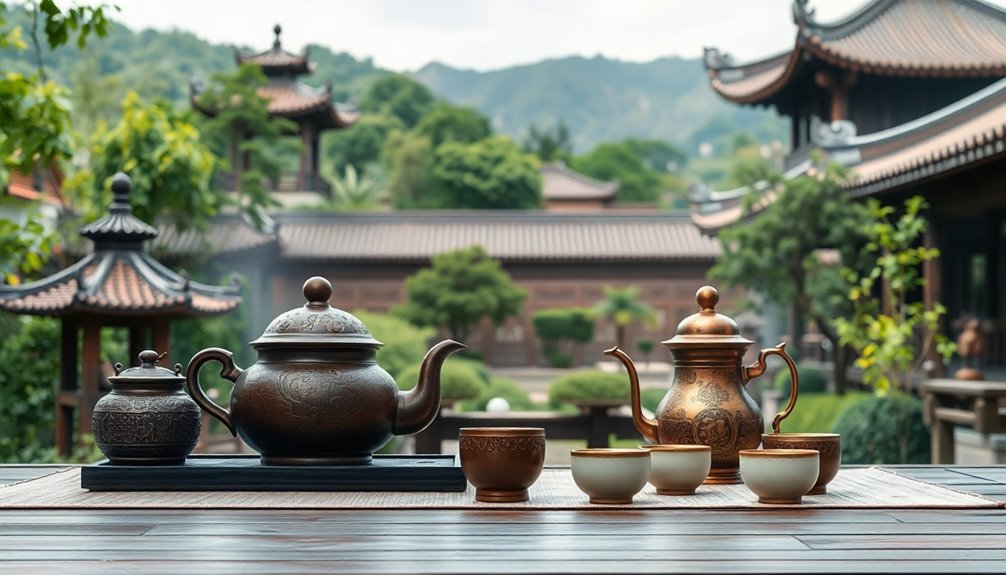
The cultural significance of tea in Asia goes beyond just drinking. It symbolizes hospitality and respect, often marking important life events and celebrations.
Whether you're enjoying a cup at home or participating in a tea ceremony, you're part of a rich tradition that fosters social connection and warmth.
Rituals Promote Mindfulness and Respect
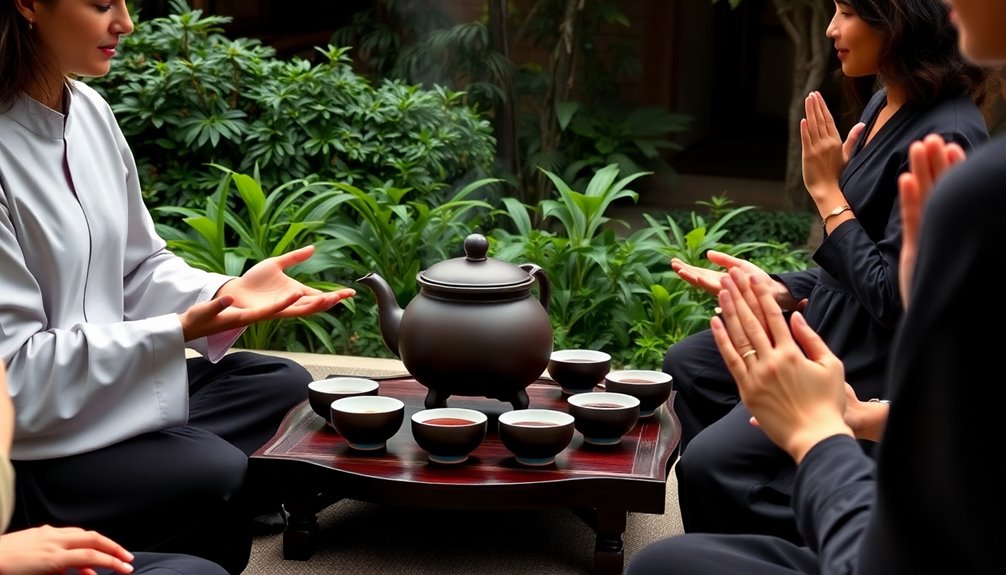
In many Asian tea ceremonies, such as the Japanese chanoyu and Korean Darye, rituals play a crucial role in promoting mindfulness and respect. When you participate in these ceremonies, you're not just drinking tea; you're engaging in a meaningful experience. Each step of the tea preparation is carefully planned, encouraging you to appreciate the moment and be present.
The rituals reflect cultural values like harmony and hospitality, reminding you to respect the tea, the utensils, and your guests. For instance, the Japanese principle of wabi-sabi teaches you to find beauty in imperfection and simplicity. This mindset helps you connect with the natural world and the fleeting nature of life.
During the ceremony, bowing and admiring the tea bowl reinforce respect among participants, strengthening social bonds and creating a communal spirit. As you follow the precise techniques and use special utensils, you enter a meditative state that deepens your emotional connection to the experience. Additionally, the use of specific utensils such as tea bowls and whisks enhances the ritual, further emphasizing the importance of each element in the ceremony.
Regional Variations in Ceremonies
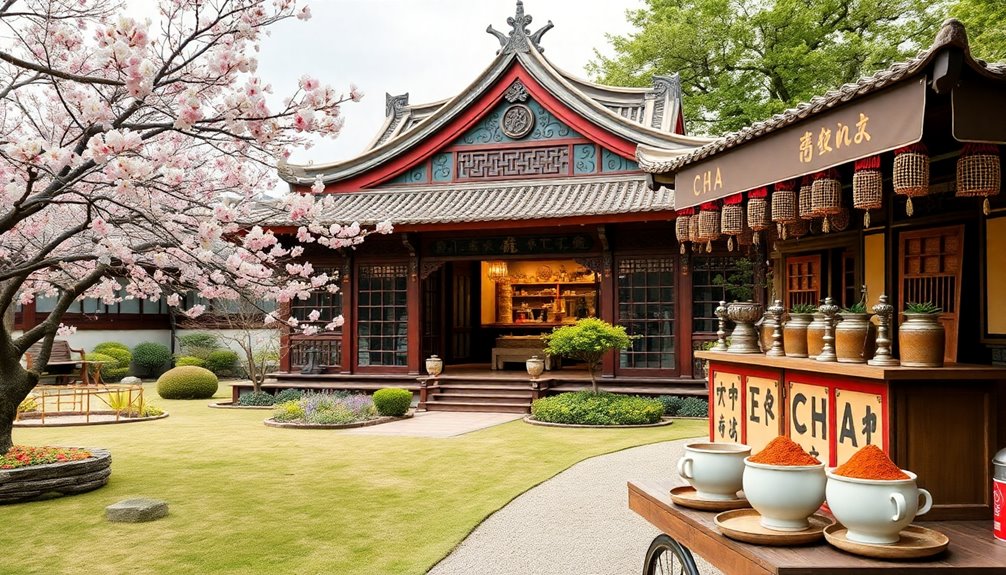
Exploring the rich tapestry of tea ceremonies across Asia reveals fascinating regional variations that reflect unique cultural values and practices.
In Japan, the tea ceremony, called Chadō, emphasizes mindfulness and the beauty of simplicity, known as wabi-sabi. You'd find this practice occurring in a tea house called a chashitsu, where every detail matters.
In Korea, the Darye tea ceremony focuses on comfort and simplicity, often held in a traditional tea room called a Dawon. Here, guests enjoy various teas paired with seasonal snacks, enhancing their experience.
Vietnamese tea ceremonies highlight hospitality, using green tea and traditional sweets in a casual setting, blending different cultural influences.
Chinese tea ceremonies stand out with intricate preparations and unique tea utensils, varying by region. In southern areas, there's a strong focus on aroma, while different teapots are used for various tea types.
Each of these ceremonies not only showcases traditional culture but also fosters social interaction and community bonding.
You can see how these regional traditions create a transformative practice, celebrating the health benefits of tea and the joy of gathering together.
Cultural Appropriation Debates
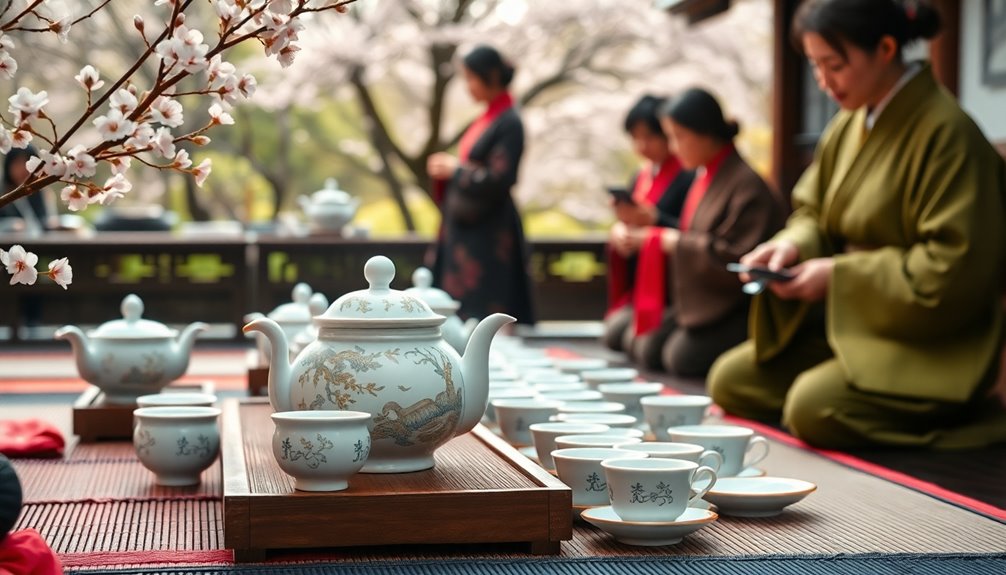
To navigate these discussions, consider your ethical responsibilities.
Reflect on power dynamics and be aware of how your actions might affect those whose cultures you're engaging with.
Practical Applications
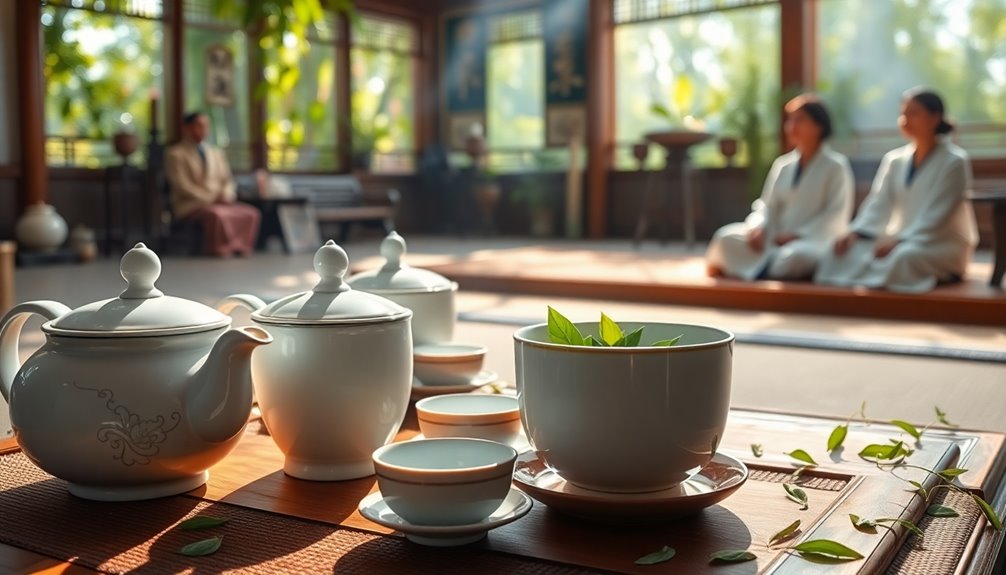
Embracing the art of tea ceremonies offers a unique opportunity to deepen your understanding of cultural practices while enjoying a moment of mindfulness. You can explore various tea ceremonies, like Japan's chanoyu and Korea's Darye, each highlighting essential values.
These practices not only bring you closer to nature but also teach you the importance of simplicity and imperfection through ceremonial preparation.
In practical applications, consider hosting a tea gathering with friends. You can create a welcoming atmosphere by prioritizing guest comfort, serving a variety of teas, and offering traditional snacks. This not only enhances everyone's experience but also educates participants about the health benefits of tea, such as relaxation and improved focus.
To make your gathering memorable, use specific utensils like the chasen for matcha or a beautifully crafted teapot for Chinese tea. As you guide your guests through the preparation process, encourage mindfulness by emphasizing the beauty of each step.
Frequently Asked Questions
What Is the Cultural Significance of the Tea Ceremony?
The tea ceremony's cultural significance lies in its embodiment of respect, mindfulness, and connection. You experience a deep appreciation for tradition, fostering relationships and creating a serene atmosphere that enhances the shared experience between hosts and guests.
What Is the Significance of the Chinese Tea Ceremony?
The significance of the Chinese tea ceremony lies in its embodiment of respect and hospitality. As you participate, you'll appreciate the mindfulness and ritual, enhancing social bonds and honoring traditions during important gatherings and celebrations.
Why Is Tea an Important Part of the Culture and Everyday Life of Japanese People?
Tea's an essential part of your daily life in Japan, symbolizing respect and connection. It brings you moments of tranquility, encourages mindfulness, and enhances social interactions, making it a cherished tradition woven into your culture.
Are Traditional Tea Ceremonies Tea Ceremonies a Common Part of Japanese Culture?
Yes, traditional tea ceremonies are a common part of Japanese culture. You'll find them celebrated for their beauty and mindfulness, offering a unique experience that deepens your appreciation for simplicity and nature in daily life.
Conclusion
In conclusion, tea ceremonies in Asia are more than just brewing tea; they're a celebration of culture and connection. By understanding their history and practices, you can appreciate the beauty of these rituals. Whether you're participating in one or simply enjoying a cup at home, remember to embrace mindfulness and respect. So, gather your friends or family, share a cup of tea, and enjoy the moment together. Happy sipping!


